A “9-YEAR-OLD HABITUAL DRUNKARD” (1900)

Brownstone Detectives investigates the history of our clients’ homes.
The story you are about to read was composed from research conducted in the course of one of those investigations.
Do you know the history of YOUR house?
********************************************************************************************************************************
A few years ago today, the internet was abuzz with the story of a 9-year-old boy who drank, smoke pot, and was abusive to everyone.

Maybe scandalous in today’s world, but back in the 19th century it was apparently a more common occurrence. In a world where 9-year-olds were habitually asked to run down to the corner bar and get their father’s (or mother’s) beer pail or growler filled, such boys were plentiful.
BOARDING BOYS
Children were also less protected, as we all know, back in the day. They were frequently even boarded with other families in the neighborhood, or shipped off to those who advertised their services in the newspapers.
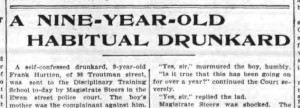
These latter were usually those who were house- or room-rich (had enough extra room for children wherever they lived), but didn’t necessarily have the income needed for getting by.
Boarding children was just another way of making ends meet.
“BOARD – TWO OR THREE CHILDREN wanted to board; will be instructed. Apply at 98 Troutman st.,” read one ad, for instance, appearing in the Daily Brooklyn Eagle in 1885.
But it was not always those seeking boarders who had the bad children who drank, smoke, and cursed. At the very same address listed in the ad above, 98 Troutman Street, some 15 years later in 1900, a very bad little boy lived.
THE ORIGINAL 9-YEAR-OLD HABITUAL DRUNKARD
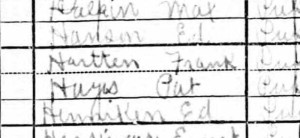
Frank Hurtten (actually “Hartten”), a “9-year-old habitual drunkard” had “become a victim of the liquor habit” and often “came home drunk.” He had gotten so bad, in fact, that his mother was his complainant against him in court. He, it was alleged by mother, had taken to “hanging around cab drivers and peddlers, carrying their cans of beers for them and drinking with them.’
Magistrate Steers, asking if this was true, received a simple, “Yes, sir,” from the boy.
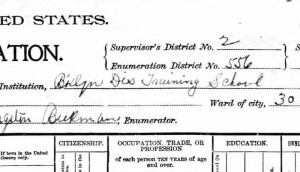
“Is it true that this has been going on for over a year?” Steers asked.
Again, “Yes, sir.”
Sadly for mother, her husband had become insane four years previous, and thus she had to send her six children to the Orphans’ Home. The mother, though, had saved up enough money to “bring out the boy” (likely in order to get him a job with which he could earn some money to help her pay for the necessities of life).
But he’d “proved such a rascal” that he was sent back to the home, from which he was eventually expelled.
WHAT HAPPENED TO HARTTEN?
After hearing the case, Magistrate Steers decided to send wee Frank to the “industrial school.” By “industrial school,” we discovered (by looking the boy up on Ancestry.com), Steers meant the “Brooklyn Disciplinary Training School for Boys” located on 18th Avenue between 56th and 58th streets. It was more likely a sort of technology high school for those boys who could not – or would not – take a basic education.
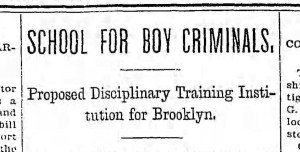
Established in 1896, in a “rickety frame building,” the institution was meant for “boys under the age of fourteen years who shall be vagrants or convicted of certain offenses.”
The idea behind this type of school was that these youths needed a structured environment within which they could learn a trade, so as to enable them to become functional members of society. For Hartten, this may have worked, for we see him in future census documents working in the trades – carpentry, pipe fitting, and, primarily, painting.
The Brooklyn Disciplinary Training School for Boys, also known as the Brooklyn District Training School, was lead by a headmaster and his wife, supported by a matron, six teachers, four servants, and providing the “education” for 126 pupils.
Disciplinary school for boys, it can be imagined, though, were no fun places for the boys and a grave management challenge for the staff. So it came as no surprise some nine years later, when it was learned, during an investigation of the school and its management, that “disclosures of harsh discipline and mismanagement were made after a presentment by the Grand Jury of Kings County.”
It can also be imagined at the other “bad boys” that Hartten came into contact with here, and theorized that he, in addition to learning a trade, may have gotten a street education of another type from the various lost and hardened fellow waifs…in picking pockets and running bunco schemes.
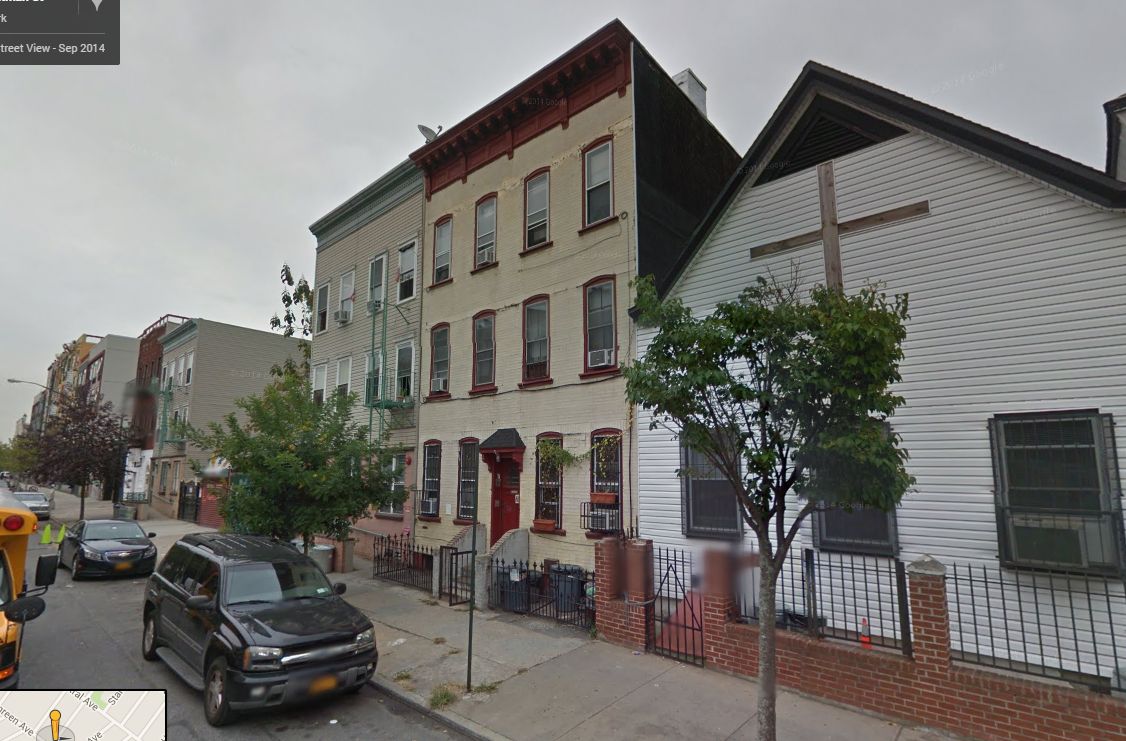
———————————————————————————————————————–
 Brownstone Detectives is an historic property research agency. Our mission is to document and save the histories of our clients’ homes. From our research, we produce our celebrated House History Books and House History Reports. Contact us today to begin discovering the history of your home.
Brownstone Detectives is an historic property research agency. Our mission is to document and save the histories of our clients’ homes. From our research, we produce our celebrated House History Books and House History Reports. Contact us today to begin discovering the history of your home.